|
Nobility of the World Volume VIII - Spain The Spanish
nobility are the persons who possess the legal status of nobility, and the system of titles and honours of Spain and
of the former kingdoms that constitute it. Some nobles possess various titles that may be inherited, but the inheritance and
creation of titles is entirely at the grace of the King of Spain. Other nobles have transmitted that status since time
immemorial. Some aristocratic families use the nobiliary particle de before their family name. During the rule of
General Francisco Franco, some new hereditary titles were conceded to individuals, and the titles granted by the Carlist pretenders
were officially recognized. Upon the accession to Spain's throne in the person of Juan Carlos of Spain in 1975,
the court of nobles holding offices attached to the royal household was not restored. Noble titleholders are subjected
to taxation, whereas under Spain's ancien régime they were exempt. 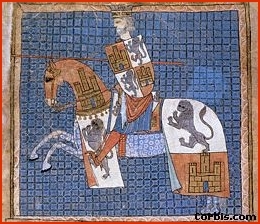
King
Juan Carlos has also created new titles to recognize the merits of politicians and artists. Some of these have been hereditary.
For example, the daughter of longtime dictator Francisco Franco, Carmen Franco y Polo became Duchess of Franco, Adolfo
Suárez became Duke of Suárez, the author Camilo José Cela became Marquis of Iria
Flavia (the Roman name of his birth city) and the classical guitarist Andres Segovia became Marquis of Salobreña.
Both Cela and Segovia's titles are now borne by their sons. He also exceptionally confirmed the title of Count of Barcelona,
a title historically attached to the Crown, but used as a title of pretence by his father Juan de Borbón
during the dynasty's Twentieth Century exile and the subsequent reign of his son. 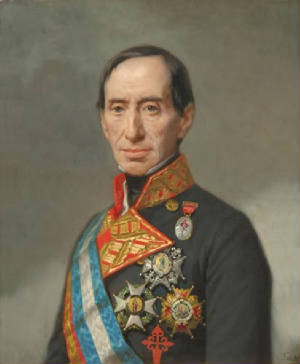 The Grandes de España Spanish nobles are
classified either as Grandes de España (also called in English grandees), or as titled nobles. Formerly, grandees
were divided into the first, second and third classes, but now, all grandees enjoy the same privileges. An individual may
hold a grandeeship, whether in possession of a title of nobility or not. Normally, however, each grandeeship is attached to
a title, though this was not always the case. Furthermore, a grandeeship is always awarded along with every ducal title, just
as most dukes in France gradually obtained a peerage under its ancien régime. A grandee of any rank outranks
a non-grandee, even if that non-grandee's title is of a higher degree. Thus, a baron-grandee enjoys higher precedence than
a marquis who is not a grandee. Except for dukes and some very ancient titles of marquesses and
counts, most Spanish titles of nobility are not attached to grandeeships. Grandees are entitled to the style of
Most Excellent Lord / Lady or His / Her Excellency. In the days of the old monarchy, Grandees had the privilege of keeping
their hats on in the presence of the sovereign, and of addressing him as "cousin". Titled nobles who are of the
rank of marquis or count use the style Most Illustrious Lord / Lady, while those of the rank of viscount, baron or lord use
simply Lord / Lady. 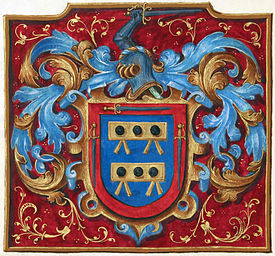
The Ranks
of Spanish Nobility
The titles of Prince of the Asturias, Prince of Gerona and Prince of
Viana are held by the heir apparent of the Spanish crown. The Spanish nobility is divided into six ranks (both the masculine and feminine forms, as well as some
extant titles, are given). Some of the titles are the following: 
Duke
- Duchess - Duque - Duquesa All the Dukedoms have attached the title of Grande de España - Dukedom of Alba
- Duke of Berducido
- Duke of Cadiz
- Duke of Ciudad Rodrigo, held by the British Duke of Wellington
- Duke of Hernani
- Duke of Fernández-Miranda
- Duke of Lugo
- Dukedom of Medinaceli
- Dukedom of Medina Sidonia
- Duke of Moctezuma, held by the descendants of Aztec Emperor Moctezuma II in Spain.
- Duke of Montblanch
- Duke of Najera, est. 1482, currently held by Don Juan Traverso y Colon de Carvajal
- succeeded on 12.4.2000, his heir apparent is
Ignacio Travesedo Julia, Conde de Trevino.
- Duke of Segovia
- Duke of Seville
- Duke
of Sotomayor
- Dukedom
of Suárez
- Dukedom
of Palma de Mallorca
- Duke
of Vigo
- Duke of Victory
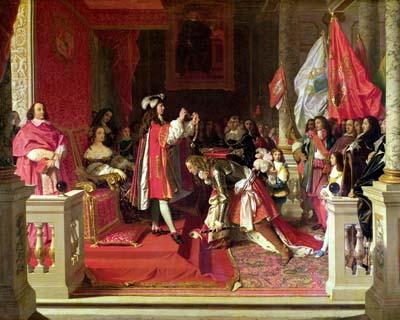 The Full
List of Spanish Dukedoms Aguiar
Ahumada
Alagón
Alba de Tormes
Albuquerque
Alcalá de
los Gazules
Alcudia
Algete
Aliaga
Algeciras
Almodóvar del Río
Almodóvar
del Valle
Almenara Alta
Almodóvar del Campo
Andria
Ansola
Arco
Arcos
Arévalo del Rey
Arión
Arjona
Atrisco
Baena
Banos (I)
Banos
(II)
Béjar
| Benavente
Berwick
Benavente
Berwick
Bivona
Camina
Canovas del Castillo
Cardona
Caylus
Ciudad Real
Denia y Tarifa
Durcal
Escalona
Estremera
Feria
Fernán
Núñez
Francavilla
Frías
Galisteo
Gandía
Gor
Granada de Ega
Hernani
Huete
Híjar
Hornachuelos
Infantado
| Lécera
Lerma
Liria y Xérica
Mandas y Villanueva
Maqueda
Marchena
Medinaceli
Medina de Río Seco
Medina Sidonia
Medina de las Torres
Miranda
Montalto
Montellano
Montemar
Nájera
Olivares
Osuna
Palata
Parcent
Parque
Pastrana
Peñaranda
del Duero
Pinohermoso
Plasencia
Riansares
San Carlos
San Lorenzo de Valhermoso
| San Ricardo
Sanlúcar
la Mayor
Santa Cristina
Santa Elena
Santangelo
Santisteban del Puerto
Santo Gemini
Santo Mauro
Sedavi
Segorbe
Sessa
Soma
Sevilla
Talavera de la Reina
Tarancon
Terranova
Uceda
Unión de Cuba
Villafranca de los Caballeros
Villahermosa
Vista Alegre
Vistahermosa
Zaragoz |
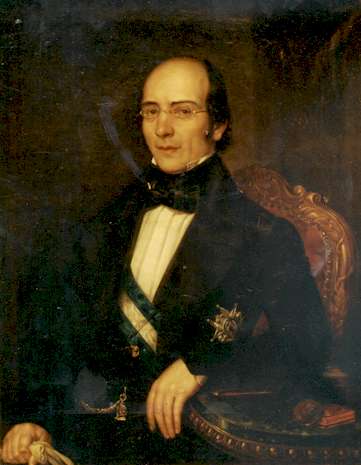
Marquis - Marchioness - Marqués - Marquesa - Marquess of Aguilar de Campoo
- Marquess of Albudeyte
- Marquess of Ardales
- Marquess de la Cadena of Nueva Espana/Mexico (extinct).
- Marquess of Iria Flavia.
- Marquess of Irujo y los Arcos
- Marquess of La Algaba
- Marquess of Figueroa
- Marquess of Frigiliana
- Marquis de Vallado
- Marquis de la Candia
- Marquess of Chinchilla
- Marquess of Astorga
- Marquess of Isla de Arousa
- Marquess of Ría de Ribadeo
- Marquess of Villena
- Marquess of Santa Maria de Silvela
- Marquess of Salobreña
- Marquess of Santillana
- Marquis of Valdecarzana
- Marquess of Menendez
- Marquis of Montsalud
- Marquis of Morella
- Joaquín Rodrigo Marqués de
- los Jardines de Aranjuez.
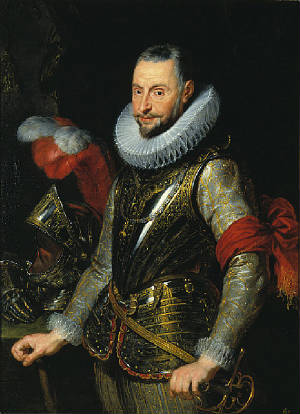 The Full
List of Spanish Marquistates Aguilar de Campóo
Aitona
Albudeite
Alcañices
Ariza
Astorga
Atarfe
Ayerbe
Balbases
Boil
Bondad Real
Bosch de Arés
Camarasa
Cañete
Carpio
Casta
Castellbell
Castel Moncayo
| Castel Rodrigo
Castromonte
Cenete
Cenia
Corvera
Duero
Eslava
Estepa
Esteva de las Delicias
Gramosa
Habana
Hoyos
Jabalquinto
Laconi
Lapilla
Leganes
Malferit
Mancera
| Marianao
Mina
Miraflores
Molíns
Montealegre
Nervión
Pozo-Rubio
Priego
Puebla de los Infantes
la Puente
Rafal
Romana
Santa Cristina
San Vicente
San
Vicente del Barco
| Santa Cruz de Mudela
Santa María de Barberá
Sierra
Bullones
Távara
Torrecilla
Valcarlos
Valdeolmos
Vallecerrato
Vallehermoso
Valparaíso
Velada
los Vélez
Vellisca
Villadarias
Villafranca del Bierzo
Villasor |
Count - Countess - Conde - Condesa - County of Barcelona
- County of Castella de Vigo
- County of Candia de Valencia
- County of Cervera
- County of Covadonga
- County of Empúries
- County of Frigiliana
- County of Guaqui
- County
of Luchana
- County of
Mansilla
- County of Montealegre
- County of Olivito
- County of Ripalda
- County of Roussillon
- County of Salvatierra
- County of Teba
- County of Toreno
- County
of Urgell
- County of Vigo
- County of Fuensaldaña
- County of Olocau
The Full List of Spanish CountshipsAlcaudete
Alcubierre
Almodóvar
Altamira
Amayuelas
Aranda
Arcos
Asalto
Atarés
Barajas
Belalcázar
Cabra
Cardona
Casa Dávalos
Castillo
Cervellón
| Cervellón
Cifuentes
Corzana
Chinchón
I
Chinchón II
Elda
Eril
España
Fernandina
Fuenclara
Fuensalida
Glimes
de Brabante
Lemos
Lerín
Miranda del Castañar
Mollina
| Monterrey
Montijo
Oñate
Oropesa
Osorno
Palma del Río
Paredes de Nava
Peñaranda de Bracamonte
Peralada
Priego
Real
Salvatierra
Santa Coloma
Santa Cruz de los Manueles
| Santa Cruz de Mopox
Santa Gadea
Santa Isabel
Sástago
Siruela
Torrepalma
Torres Cabrera
Torroella de Montgrí
Truillas
Vallesa de Mandor
Vía Manuel
Villafranqueza
Villanueva
Zavellá |
Viscount - Viscountess
- Vizconde - Vizcondesa - Viscounty
of la Alborada.
- Viscounty
of Altamira
- Viscounty
of Banderas.
- Viscounty
of Cabrera.
- Viscounty
of la Calzada.
- Viscounty
of Quintanilla de Florez.
Baron - Baroness - Barón - BaronesaTitle of Lord - Lady - Señor - SeñoraThe title of Lord is out of the
usual ranks of Spanish nobility, meaning that it has no place in the order of precedence and stays alone. Many of the spanish
lordships are among the oldest nobility titles in Spain, and they usually granted the holder the political power over their
lordship. Although some lordships were created by the kings of Spain, others existed before them, and haven't been created
by any known king. For example, the lord of Biscay would be the head of Biscay, holding a great degree of independence
from the king of Castile, to whom he could pledge or not pledge suzerainty, but to whom he was not, at least at first, a vassal:
each new lord of Biscay had to renew their oath to the king, although in the end the kings of Castile inherited the lordship. - Lord of Balaguer: held by the King of Spain
- Lord of Biscay: since 1378 held by the King of Spain, thus
acquiring the hitherto semi-independent lordship of Biscay
- Lord of Molina de Aragón
- Lord of Salas
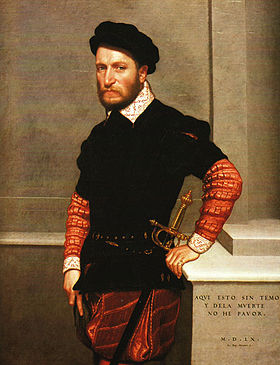
Other
Titles of Nobility
- Infante: currently used by those royal princes who are not the heir apparent to the throne. Previously, it was also
a high nobility title, being the most famous holders the Infantes de Carrión that appear in the Lay
of the Cid.
- Prince: as
said before, it is a title used by the heir apparent to the throne. Three princedoms exist in Spain, one for each one of the
three kingdoms that merged to form Spain:
- the Prince of Asturias, heir apparent to the throne of the kingdom of Castile and Leon.
- the Prince of Viana, heir apparent to the throne of the
kingdom Navarre.
- the Prince
of Girona, heir apparent to the throne of the kingdom of Aragon.
- Ricohombre (fem. Ricahembra): used during the Reconquista, it is a roughly equivalent to Baron.
By the 17th century, it was a synonym of nobleman.
- Condestable: cognate with Constable, it is hereditary title used in the Kingdoms of Castile and Leon
to refer to the second person in power in the kingdom, after the King. It was a hereditary title within the Velasco family,
that gradually lost the powers once attributed to the Condestable of Castile.
- Caballero: equivalent to Knight, it was very rare in the kingdom of Castile, but common
in the kingdom of Aragon, where there were four types of caballeros:
- Golden-spur caballero: used by those infanzones (look below) who has been enknighted. They
hold the greatest prestige among the knights' ranks.
- Royal-privilege caballero: it was a personal title not to be inherited by his descendents, granted by the
king to the Doctors in Law (LL.D. holders). It was rarely used by their holders, since the doctoral rank had bigger privileges.
- Caballero Mesnadero: to refer to the non first-born sons of
a Ricohombre. It disappeared during the 18th century, when the Burbon kings purged the ranks of the nobility.
- Caballero franco: to refer to those who had previously been
hijosdalgo or infanzones, but were commoner-born.
- Potestad: only in the kingdom of Aragon, its equivalent is the Italian podestà,
an administrative-related title. It disappeared with the Nueva Planta decrees in 1713.
- Doctor: indeed, any holder of a PhD or any other doctoral
rank was recognised privileges equal to those of higher nobility. For example, doctors were exempt of uncovering their heads
in the presence of the King, a privilege shared only by the grandees.
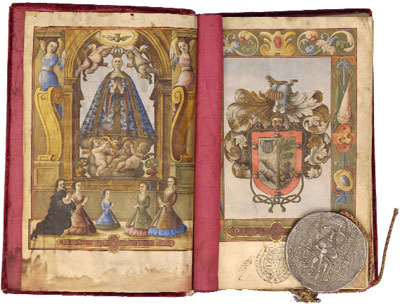
The
Lower Nobility of Spain
Lower nobility held titles such as hidalgo, infanzon (aragonese equivalent
to hidalgo), escudero (esquire), but these do not correspond to baron, a title unknown to spanish nobility
but in Catalonia. Hidalgo (plural:hijosdalgo) was the most common one, all the people of Biscay having been granted
that noble title. All titled and untitled nobles are considered hidalgos. Contrary to the rest of noble titles, the one of
hidalgo didn't have attached any fief, grant or land, and, therefore, many were as poor as commoners, although they were tax-exempted
and could join the civil service or the army. Hidalgo is usually regarded as a paradigm of Spanish racism: literally it means
son of something, meaning that the hidalgo title holder was of pure christian blood, being able to trace his ancestors and
prove he was not of Jewish or Moorish descendant; they were usually considered descendants of noblemen who did not inherit
the throne.[citation needed]. Indeed, although during the Middle Ages it was a title granted by the King of Castile
as a reward for any service done to the crown (or as a way of recognising rights, as in the case of Biscay), in the same way
escudero was granted for military achievements, when the Reconquista ended, hidalgo, being the simplest way of proving
one's pure blood, came to be the only lesser title to remain among the ranks of spanish nobility. 
Right of
Succession The evidence supporting one's claim to a title may be reviewed by the Deputation of Grandees and Titled
Nobles of the Kingdom (Diputación de Grandes y Títulos del Reino). The body includes eight grandees, eight nobles
who are not grandees, and a president who must hold both a grandeeship and a hereditary title without grandeeship. Succession to
Spanish noble titles is hereditary, but not automatic. The original letters patent which created the title determines
the course of succession. The title of King of Spain however
currently follows male-preference cognatic primogeniture, as set in the medievalCastilian law Siete Partidas. While noble
titles historically have followed the rule of male-preference primogeniture, a Spanish law came into effect on October 30,
2006, after approval by both houses of parliament, establishing the inheritance of hereditary noble titles by the firstborn
regardless of sex. The law is retroactive to July 27, 2005. Following the death of a noble, the senior heir may petition the
King through the Spanish Ministry of Justice for permission to use the title. If the senior heir does not make a petition
within two years, then other heirs may themselves do so. Furthermore, there is an overall limit of forty years within which
one may claim a title. The petitioner must demonstrate that he or she is a child, grandchild or direct male line
descendant of a noble (whether a grandee or not), or that he or she belongs to certain bodies or orders of chivalry deemed
noble, or that the father's family is recognized as noble (if succeeding to a grandeeship, the mother's family also). Furthermore,
a fee must be paid; the fees depend on whether the title is attached to a grandeeship or not, and on whether the heir is a
direct descendant or collateralkinsman to the previous holder. The petition is normally granted, except if the petitioner
is a criminal. Titles may also be ceded to heirs other than the senior heir during the lifetime of the main titleholder.
Normally, the process is used to allow younger children to succeed to the titles, while the highest or principal title goes
to the senior heir. Only subsidiary titles may be ceded; the principal title must be reserved for the senior heir. The cession
of titles may only be done with the approval of the monarch. Cayetana
Fitz-James Stuart, 18th Duchess of Alba, holds the Guinness Book of Records for number of titles with over 50 titles. References- ^ http://www.boe.es/boe/dias/2006/10/31/pdfs/A37742-37743.pdf
- Atienza, Julio de. Nobiliario Español: Diccionario
Heráldico de Apellidos Españoles y de Títulos Nobiliarios. Madrid: Aguilar, 1948.
- Figueroa y Melgar, Alfonso de. Estudio Histórico Sobre
Algunas Familias Españolas. 6v. in 12 parts. Madrid: Editions Dawson & Fry, 1965.
- Noble Titles in Spain and Spanish Grandees
- Nobility & Grandee Titles in Spain (Ministry of Justice)
|

